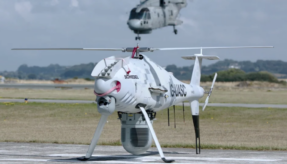
Keith Skempton CBE DL is a retired Major General who has been employed in commercial defence activities, both manufacturing and property and infrastructure, since leaving the Army. He is now an independent consultant. Here, Mr Skempton explains the importance of partnership working and the adoption of a new ‘Whole Force Approach’ in delivering winning, innovative solutions to the Armed Forces.

The term ‘partnership’ is a much-used buzzword when describing how the public and private sectors are working together. It is worth taking time to think about what partnership means in this as well as the broader context of any client-supplier relationship. Despite the headline reductions from the Strategic Defence and Security Review of 2010 and its subsequent realignments in 2015, there is a great opportunity for both the private sector and the Armed Forces to squeeze more value out of the mechanisms and relationships in place.
There is a drive to reduce the footprint of the defence estate, and Government has also outlined a specific requirement to provide land for housing. This context provides an opportunity for the private sector to work closely with the Services to produce innovative, cost-effective solutions.
The Armed Forces have adopted a ‘Whole Force Approach’ which is all about establishing partnering arrangements between the military, civil servants, contractors and the wider defence industry. Successful partnerships between the Armed Forces and the private sector rely on three key concepts: trust, innovation and collaboration.
Trust
The very nature of partnership relies on trust and shared risk between partners to advance mutual interest. The Armed Forces, as an organisation, are well positioned to work effectively in a partnership. They are organised in a way that is rooted in team-work and getting to know and trust each other because of a common skill or output. These ‘drills’ bring quality, reliability and trust.
The levels of command can adapt by combining the knowledge of what is required at least two levels up with how it is being implemented at least two levels down. Risk is measured by knowledge and understanding of the available resources and increasingly and significantly, capital and ‘through-life’ costs. It is the same for the private sector. The idea of ‘drill’ applies to their technical competence both individually and as a group. Risk is measured by capability and cost. It is fully understood.
Innovation
For partnership to thrive, a culture of innovation needs to be adopted, encouraging workable, cost-effective ‘bright ideas’. The Army has embraced a closer relationship with industry with seminars at the Centre for Historical Analysis and Conflict Research at Camberly. For the wider commercial audience, they host the Army Capability Symposium at which the Chief of the General Staff and his cohort of senior, influential policy makers brief around 300 representatives from industry.
It would be beneficial to see more open fora of this kind, so that understanding is widespread and the opportunity to develop cost-effective ideas is increased. This sort of team approach allows such ‘bright ideas’ to be aligned against key requirements and explored without process being a block to progress. Importantly, the process of encouraging such innovation should account for all those with whom one engages in the supply chain regardless of the size of the organisation. For all parties, the additional investment to do this – in time and cost – should be compensated by the opportunities they bring to light.
Collaboration
A successful partnership requires collaboration and with it some transparency: the very nature of a partnership is based upon mutual proportionate benefit. A key component is agility and with it the ability to adapt and adjust the detail of major programmes which cannot be guaranteed to run without such flexibility.
Collaboration applies internally but it also extends to full co-operation with suppliers. The BS11000 programme, advocated by the Institute of Collaborative Working, applies as much to both. Successful collaboration can be achieved by early notification of a requirement or objective to help to produce the best support. Waiting for a contract notice or the OJEU is often too late for a supplier to produce the best-considered, cost-effective solution for the client, be it government service or private sector.
Partnership can be formal and contractual or informal and encompassing a familiar supply chain or outsourcing from a broader base. However, the essence of partnership is the same. It’s about encouraging innovation which means opening up to a broader audience for their ideas. Once a course is chosen, the relationships and team-work need to work together over time to produce the best outcome – this ‘Whole Force Approach’ – will be well worth the investment.
If you would like to join our community and read more articles like this then please click here
2015 Strategic Defence and Security Review (SDSR) Armed Forces Keith Skempton CBE DL Whole Force Approach







